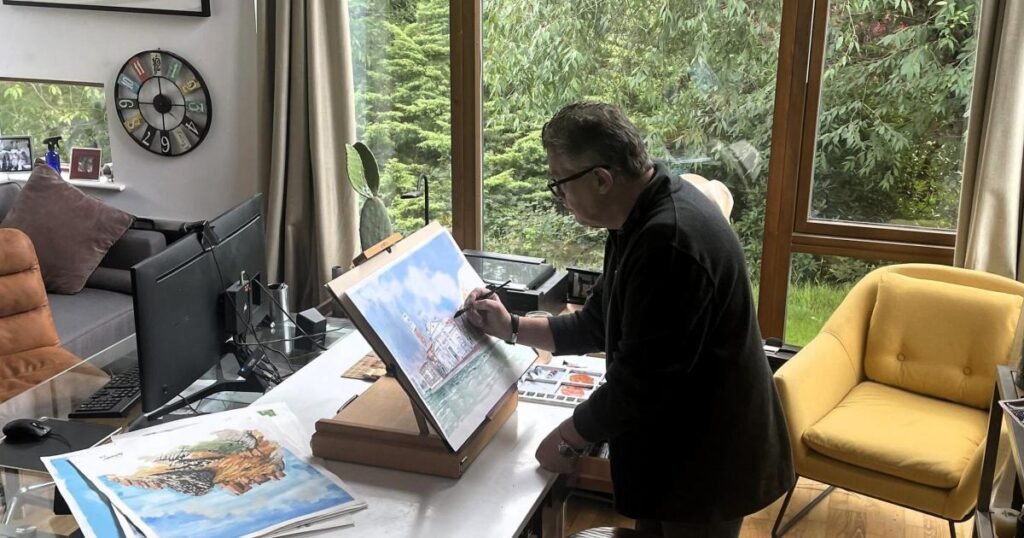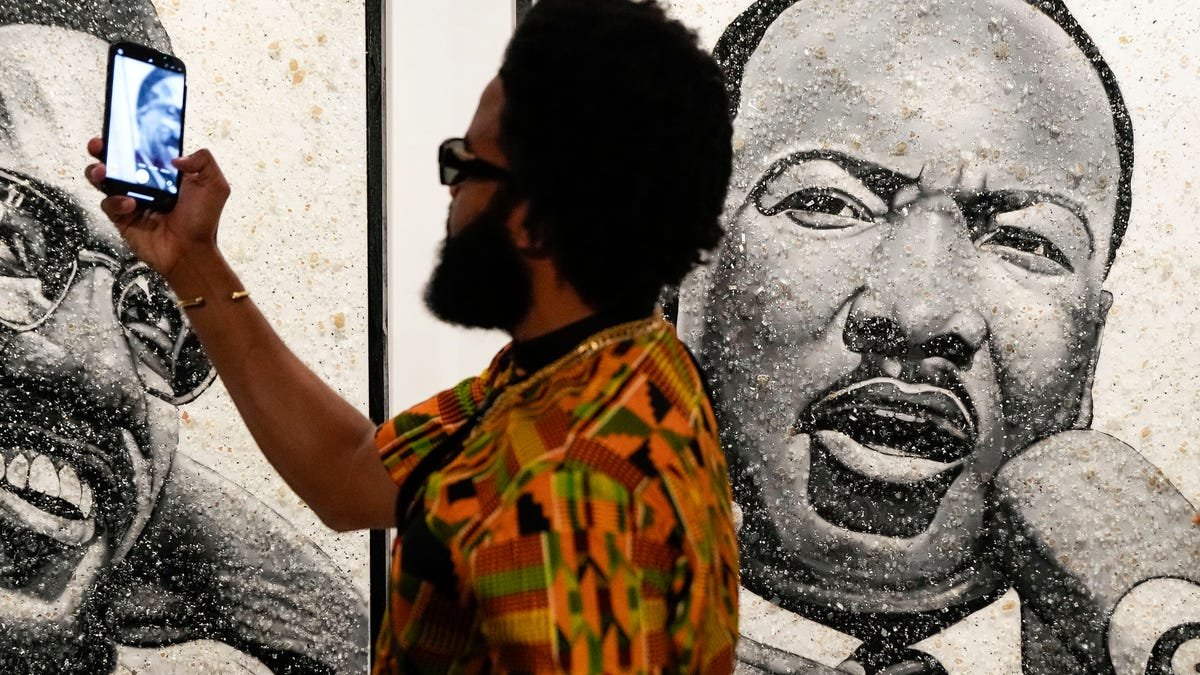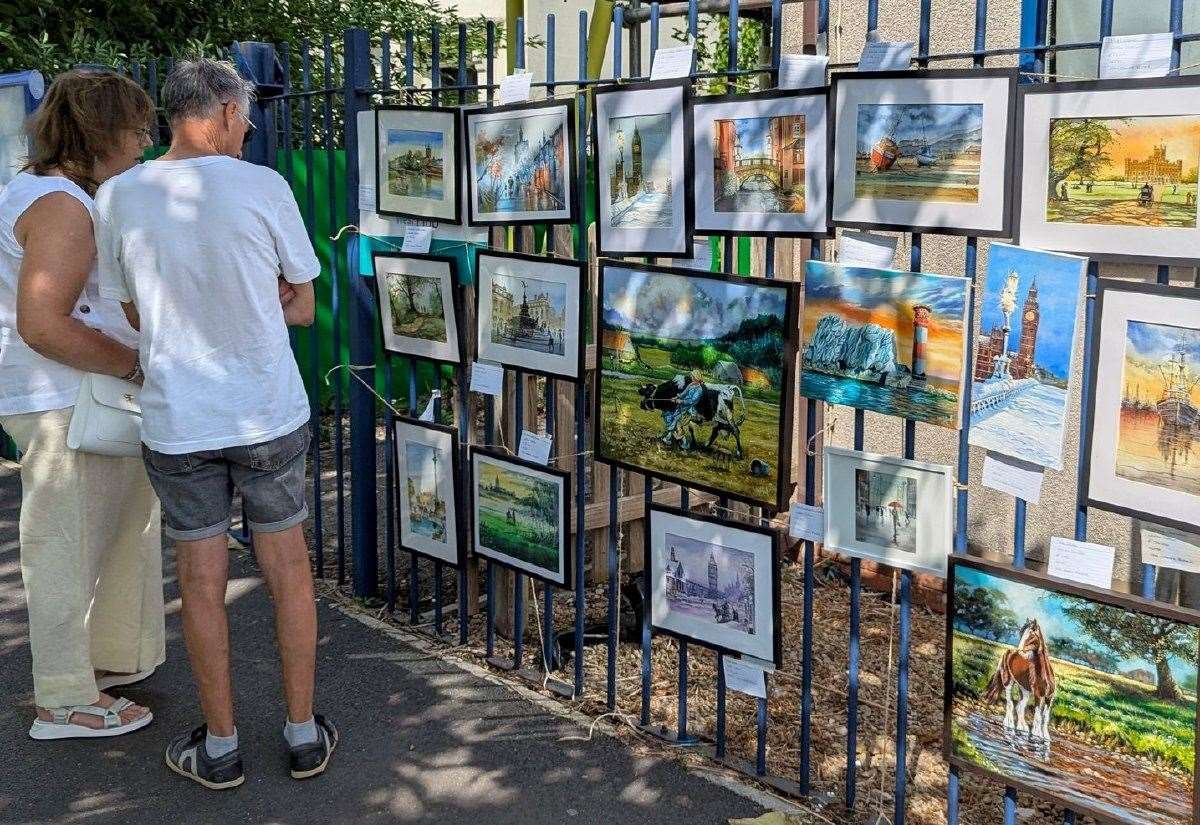The Springburn-born architect, who was awarded the Royal Gold Medal in Architecture from the Royal Scottish Academy in 2008, is gearing up to stage the largest exhibition of his artwork next month.
Entitled Not Black and White, the exhibition will see Mr Dunlop showcase sketches completed during lecturing and teaching trips to Italy and Spain, trips to Lewis and other watercolours that represent the range of his current interests.
Also on display will be a collection of fiery watercolours documenting infernos across the globe, including his triptych of the Glasgow School of Art blaze in 2018, which was shortlisted for an international prize.

“In 2023, I wanted to do something which would commemorate the fifth anniversary of the burning down of the Mackintosh Building. I did some sketches the morning after the fire and felt that I could make them a little bit more dramatic and that I could give a better indication of what it was actually like, so I did paintings of it for the first time for the fifth anniversary.
“I was taken back by the attention the paintings received. They got shortlisted for the World Architecture Festival and they were exhibited at Sir John Soane’s Museum in London and also at the Royal Academy of Arts. So I thought, ‘Well let’s pursue this a bit further’, and rather than simply doing pencil drawings I thought I’d try and do watercolours.”
He added: “This will be the largest exhibition I’ve held of my artwork. There will be 16 to 20 watercolours on show. The Art School fire watercolours have gone on display before but the majority of the rest of them have never been seen before. There’s a variety of different kinds of watercolours.
Read more:
“So although I’ve drawn all my life and I’ve taken a sketchbook with me everywhere I’ve been, actually doing watercolours is a brand-new experience for me. And it’s one I think which is developing very interestingly. And people seem interested in it. So that’s good.”
As a now fully fledged aficionado of the painting method, Prof Dunlop expresses frustration as to why it took him so long to pick up a brush.
He said: “Quite frankly I don’t understand why I didn’t start doing it 25 years ago. I’m a relatively new watercolourist and as I’m doing it I’m trying to understand the kind of discipline behind it.
“Watercolours are not like doing an oil painting or any other similar medium because you can’t overpaint with watercolours. Once you’ve made the decision to do a watercolour, what you put down is what you put down. So there’s an element of discipline in planning how you actually construct a watercolour painting.
“As an architect, I enjoy that element of it, although it’s very different to the work you produce as an architect. My architectural drawings have to be very, very precise. A client has to know what they are getting. So although they were drawings they had to be done very accurately, especially when you are making planning applications and things like that, so the planners could asses accurately what it is your proposing.
“Whereas, with a watercolour, you can be a lot more free-hand in how you approach it.”

He noted: “I’ve moved from black and white drawings to drawings that are bursting with colour. That’s why I called the exhibition ‘It’s Not Black and White’. Although it can be bloody difficult to find the right colours and the right tone. I have to hand it to the brilliant watercolourists out there. Of all the artistic disciplines I think painting watercolours is the hardest.”
Read more:
As well as being motivated to continue painting watercolours by the reaction he received to his School of Art triptych, Prof Dunlop, who himself studied architecture at the world-leading institution, said he also uses Charles Rennie Mackintosh‘s watercolours, which were mainly painted in France in the last years of his life, as a source of inspiration.
He said: “The people I find inspirational are people like Mackintosh, who went to the south of France and produced some beautiful watercolour paintings. He wasn’t just a great architect, he was also a formidable artist.
“I’ve been looking very seriously at how he tackled things and how we worked and not necessarily replicate it but learn from him. That’s been a kind of motivating factor too behind what I’ve been doing in the last couple of years. There’s no better a person really whose footsteps to follow in.”
‘Not Black and White’ runs from September 15 to October 3 at Il Salotto on Bell Street in Glasgow.






